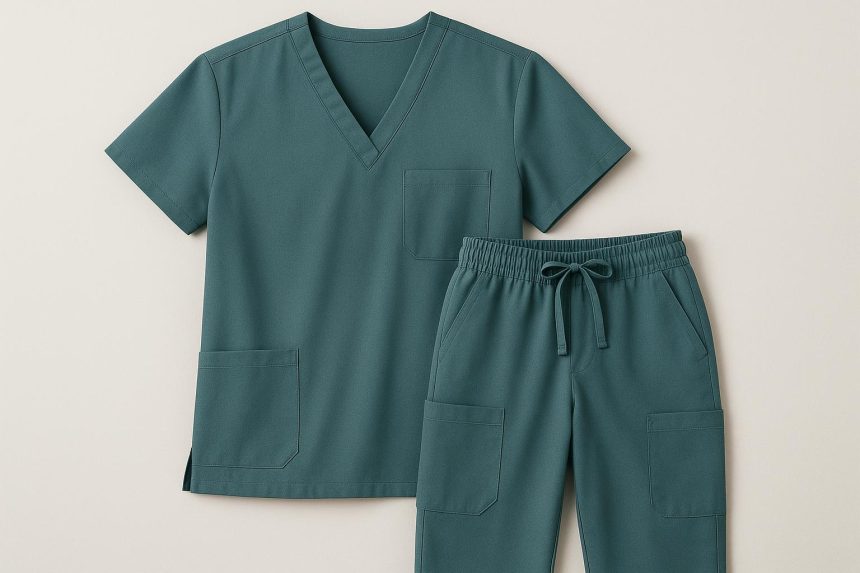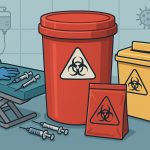1. Evolution of Scrubs: From Operating Rooms to Everyday Healthcare
One of the most recognizable elements of modern medical workwear, scrubs have a story leading far back before they became the near-ubiquitous uniform we see today. At its inception, surgical medicine was an area in which little was known about contamination or infection control. Doctors and nurses often operated in their day-to-day clothes, unimaginable by today’s standards. As scientific knowledge broadened, including that about bacteria, hygiene, and sterile technique, it became evident to healthcare institutions that there was a pressing need for dedicated, bacteria-resistant garments.
It wasn’t until the early 20th century that hospitals implemented simple gowns and masks for cleaner operating conditions. A lot of the early “scrub garments” were white to denote purity and cleanliness. However, under bright operating lights, the glare caused by the white garments strained surgeons’ eyes. For this reason, green and blue fabrics were adopted for scrub use; these colors were not as reflective, thus reducing eye fatigue. As time passed, functional positives became unequivocal, allowing scrubs to grow beyond the surgical theaters into general health care.
Today, scrubs are worn by nurses, doctors, therapists, technicians, carers, dentists, veterinarians, and support staff alike, often serving both practical and symbolic functions within the community of healthcare.
2. Why Scrubs Matter: The Importance of Hygiene and Safety
One of the main reasons scrubs are essential in healthcare environments is because of the role they play in infection prevention. Clinical settings are highly sensitive areas where one will find bodily fluids, contaminants, and pathogens present everywhere. Scrubs act as a protective barrier between the wearer and these hazards. Their fabrics are engineered to go through high-temperature laundering to ensure that contaminants are removed after every shift effectively.
Unlike regular garments, scrubs have few seams, no superfluous embellishments, and are made from fabrics that cannot retain bacteria. Simplicity supports sterile conditions and, at the same time, diminishes the chances of clothes becoming a carrier of hazardous microorganisms. The other benefit of using scrubs for health care organisations is that it brings about complete uniformity, implying all staff will follow similar hygiene practices.
The hygienic value of scrubs extends into realms of patient perception. Instinctively, a patient associates clean scrubs with cleanliness, care, and trust. A health provider appearing fresh in well-maintained scrubs projects professionalism and commitment to patient safety, qualities that heighten the experience of care.
3. The Comfort Advantage: Why Scrubs Are Designed for Long Shifts
Professionals in this field often have to go through long, arduous shifts that require constant movement, lifting, bending, and multitasking. Comfort, therefore, is not a luxury; it is a requirement. Most of the time, scrubs are made from lightweight, breathable fabrics that allow for airflow and temperature regulation during physically demanding activities.
Modern scrubs feature stretch fibers that move with the body to avoid restriction when performing critical tasks of caring for a patient, handling an emergency, or navigating through a crowded ward. Elastic waistbands, vented hems, and ergonomic seams add to this freedom of movement and all-day comfort.
Comfortable design in scrubs also promotes mental well-being among medical professionals. When staff feel physically well, they can focus more effectively on patient care, decision-making, and communication. In high-pressure settings, comfort is an important factor in minimising fatigue and maintaining overall performance.
4. Scrubs as Functional Tools:
Pockets, Panels, and Practicality In addition to comfort, scrubs must also meet the practical needs of busy healthcare workplaces. Manufacturers have integrated over the years some very thoughtful design elements into scrubs that are geared toward functionality in the workplace. Multiple pockets allow healthcare professionals to carry such essentials as gloves, pens, scissors, notepads, pagers, and personal protective equipment. Pockets are strategically placed to make accessibility easy, minimizing the need for additional bags or equipment.
Certain scrubs feature utility loops, badge holders, moisture-wicking material, and extra stitching to stand up to their constant wear and tear in daily use. The combination of durability and utility makes scrubs an indispensable part of modern healthcare infrastructure.
5. The Rise of Modern Scrub Aesthetics With the modernization of healthcare settings
So is the demand to have workwear that looks contemporary while delivering high performance. It opens up new opportunities for growth in the scrubs market by offering stylish, tailored, and fashionable scrubs. Healthcare professionals today value clean lines and sleek designs, and appreciate garments that help give them a polished professional appearance. Within this trend, refined scrubs clothing minimalistic has gained immense popularity. This design ethos favors simplicity, elegance, and functionality. Scrubs that fall into this category often possess subtle tailoring, smooth silhouettes, premium fabrics, and a muted color palette. These scrubs are balanced between fashion and practicality as they allow health staff to reveal some personal style without compromising hygiene or any other safety standards.
It is popular in private clinics, wellness centres, and modern medical environments that like a high-end aesthetic which will align with their brand identity.
6. Colour Coding and Identity: What Scrubs Communicate in Healthcare Settings
One of the most striking aspects of scrubs is their role in visual communication. The healthcare environment relies heavily on clear identification, and scrubs play a significant part in establishing that clarity. Many hospitals and practices have color-coding schemes in place to distinguish between departments and roles. For example:
Nurses can wear navy or royal blue.
• Doctors may wear darker tones or specific departmental colours.
• Most paediatric teams prefer vividly coloured, playful patterns
• Dentists and dental nurses may wear teal or white
•Green or patterned scrubs may be worn by veterinary staff.
This system helps patients recognise quickly who is assisting them, thereby reducing confusion and increasing confidence. It also enhances team cohesion and strengthens the professional image of the facility.
With private practices and branded clinics, personalised scrubs with embroidered logos and colour palettes of your choosing reinforce the identity of that clinic. This cohesive, branded look is aesthetically appealing and helps garner trust and credibility within the patient community.
7. Psychological Impact: How Scrubs Affect Caregiver and Patient Confidence
Scrubs hold a powerful psychological effect that surpasses their functional use. Putting on scrubs for caregivers signifies readiness, professionalism, and purpose. This marks the transition into the caregiving role and creates a sense of cohesion among members of a team. Comfortable, well-fitted scrubs will improve morale and make professionals feel more assured through shifts.
Scrubs offer reassurance to patients. They convey order, cleanliness, and competence. A patient entering a clinic or hospital often feels anxious or unsure; seeing staff attired in coordinated, clean scrubs helps to build trust and comfort. This relationship between appearance and the confidence of patients is well documented, and scrubs form a vital part in creating a positive patient experience.
8. Innovation in Scrubs: The Future of Medical Workwear
As medical workwear continues to evolve, scrubs are also becoming more technologically advanced. Many manufacturers currently offer scrubs with the following features:
• Antimicrobial coatings
• Moisture-wicking technology
• Four-way stretch fabrics
• Stain-resistant finishes
• Eco-friendly materials
These innovations enhance durability, reduce odour, improve comfort, and support sustainability goals. Eco-friendly scrubs are already being manufactured from recycled or responsibly sourced materials as more organisations highlight environmentally friendly practices.
Besides, much focus has been given to inclusivity. From petite to plus-size to maternity fits, modern scrubs come in all shapes, sizes, and fits to accommodate every professional so that they feel comfortable and confident in their uniform.
9. Scrubs as a Symbol of Professional Commitment
Finally, scrubs are more than just fabric and stitches. They reflect the commitment of the workforce in healthcare. Every shift, scrubs accompany professionals through critical tasks, emotional challenges, and life-saving care. They remind one of responsibility, compassion, and resilience. From a busy city hospital to the small community clinic, scrubs form part of common identity for those who work tirelessly in support of others’ wellbeing. As the industry continues to change, scrubs also continue to evolve-innovative, stylish, and functional to meet the needs of today’s and tomorrow’s healthcare professionals.
Lynn Martelli is an editor at Readability. She received her MFA in Creative Writing from Antioch University and has worked as an editor for over 10 years. Lynn has edited a wide variety of books, including fiction, non-fiction, memoirs, and more. In her free time, Lynn enjoys reading, writing, and spending time with her family and friends.















